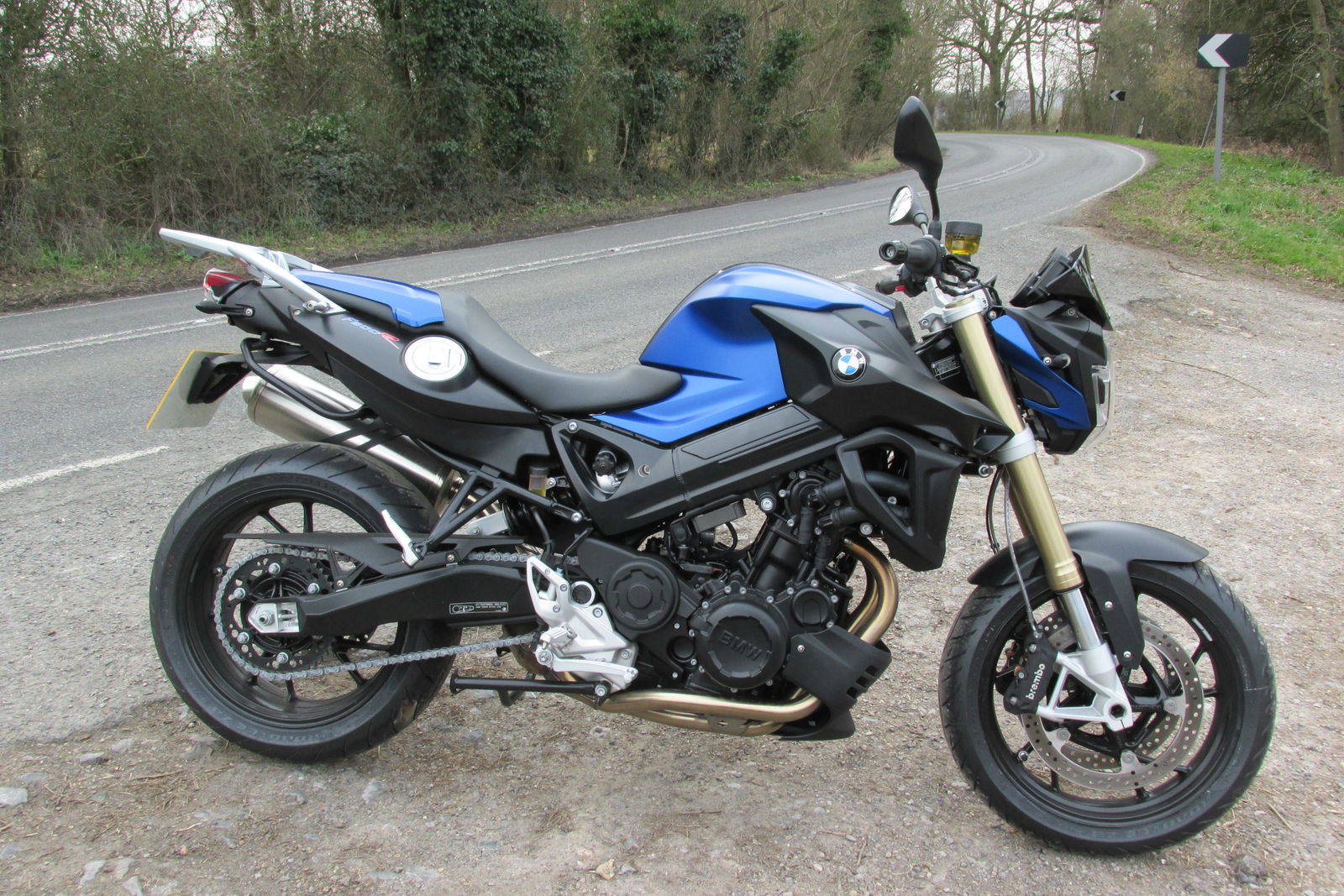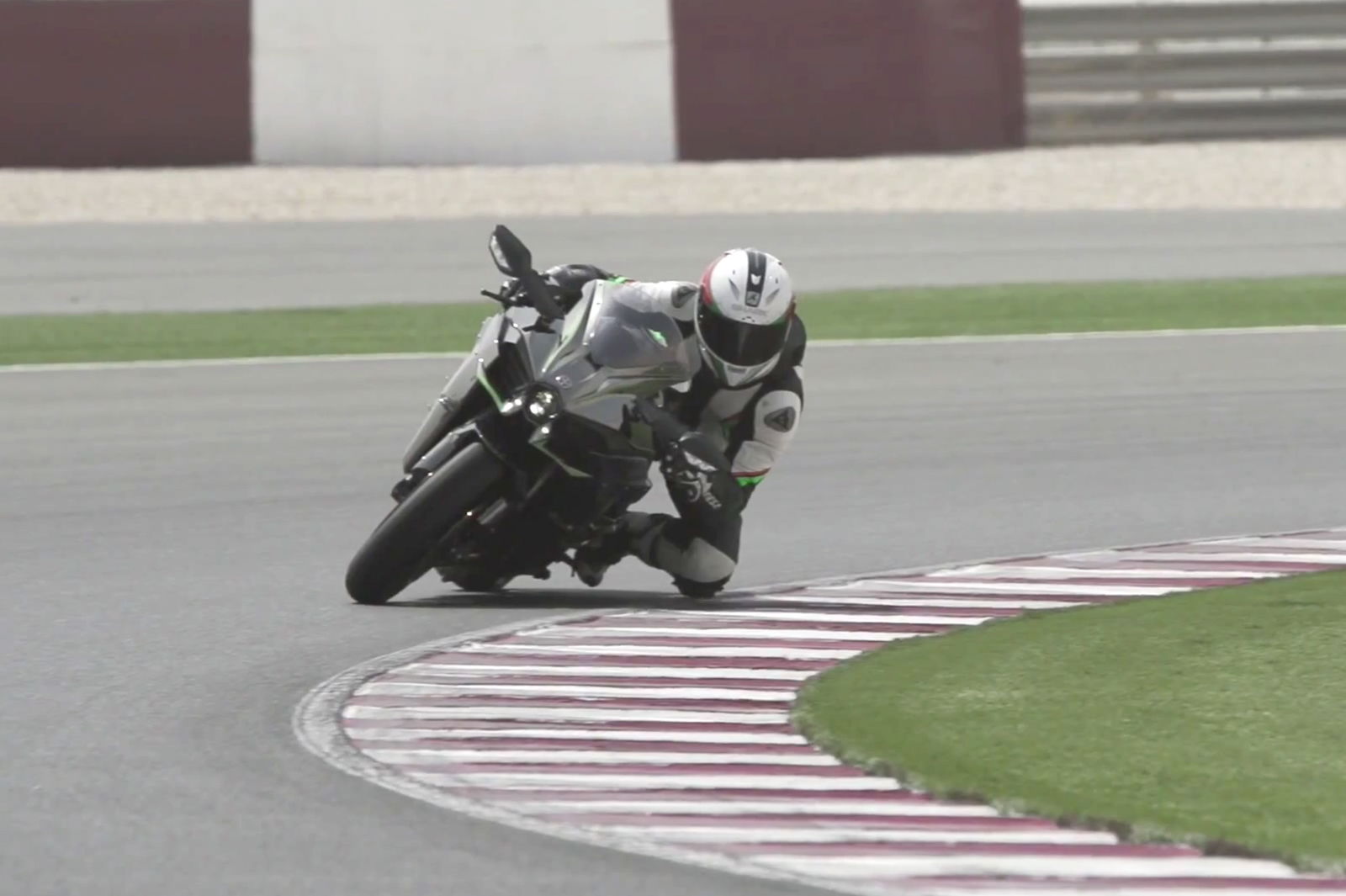First UK road test: BMW F800R review
A German Street Triple


TUCKED away in BMW's range, losing a competition for attention with the likes of the S1000RR and R1200GS, is a surprisingly good entry-level middleweight.
Six years after its introduction, the F800R has been given a round of updates for 2015.
Power is up from 87hp to 90hp thanks to fuel injection and exhaust changes. First and second gears are shorter, enhancing the effect that modest hike has on acceleration.
The suspension has been uprated, with the addition of upside-down forks, and brakes upgraded to include radial-mounted Brembo calipers at the front.
The riding position has been changed – the seat is 10mm lower, at 790mm, there are new bars and the foot-pegs have been lowered and moved forward slightly. It’s also got new wheels.
But the thing you’re going to notice first, if you’re familiar with the old version, is that it’s lost its Anne Robinson wink. Yes, the lopsided asymmetrical headlights are gone, as part of a restyling which also includes new side panels, radiator covers and fly screen.
It still makes a weird noise. It’s a noise only a BMW parallel-twin seems able to produce, unlike any other parallel-twin I know. It sounds hollow, like an engine in a wooden box. It lacks some mechanical character and feels a bit sanitised. It’s a bit of old-BMW gawkiness, the kind of noise you might expect to go hand-in-hand with the firm’s traditional three-button indicators (which thankfully the F800R doesn’t have). It's odd.
It's just a sound though. The F800R engine does still have some character in the way it delivers power.
It's surprisingly strong and aggressive-feeling, with an instant, torquey throttle response. About town, with the shorter first and second gears, a degree or two of throttle is all that’s need to propel you forward with some urgency. The difference between second and third feels quite big but the engine has enough low-down torque to make it unimportant. It pulls pretty strongly from just over 3,000rpm in third.
It's a flexible engine too, as happy revving to its 8,500rpm red line as delivering mid-range punch. It never does anything surprising. There's no step-up in power anywhere. It just grows rapidly and linearly to a top-end that’s as eager as the bottom. Peak power is at 8,000rpm and peak torque, of 63lbft, at 5,800rpm.
The riding position is supposedly more relaxed but to me felt more about chucking the bike around than taking it easy. The wide bars are low enough to put some force and feedback through your arms under braking. There’s a slight hunch to it, like a Ducati Monster 821 or 1200, but less extreme. No doubt the effect of the lower pegs is countered by the seat also being lowered. There are optional low and high seats, giving a range of 770-820mm, so pretty much everyone should find a height they’re comfortable with.
The bike I tested was fitted with BMW’s Electronic Suspension Adjustment, or ESA, a £290 option on top of the basic price of £7,595 on the road.
There are three settings: Comfort, Normal and Sport, which you choose between by pressing a single button on the left bar.
Even in Comfort it felt firm and well-damped. In fact I didn’t feel the need for the other two modes, even on sweeping, bumpy bends. The F800R feels taut enough already.
It reminded me of Triumph's Street Triple, still the benchmark of naked middleweights. Admittedly the Triumph is probably sharper in many respects. It revs higher and makes 16hp more.
But both offer a flexible combination of mid-range and top-end. Both have taut suspension and a similar sporty, aggressive, hooligan attitude.
Claimed weight of the BMW is 202kg, which isn’t bad considering that’s ready to ride, with a full tank. It feels light and responsive changing direction on country roads or in town.
The brakes are excellent, with lots of bite from the front four-pot calipers and 320mm discs. Pressure from one finger is sufficient much of the time. The ABS seems capable, not confused by braking on bumpy surfaces like some systems can be.

